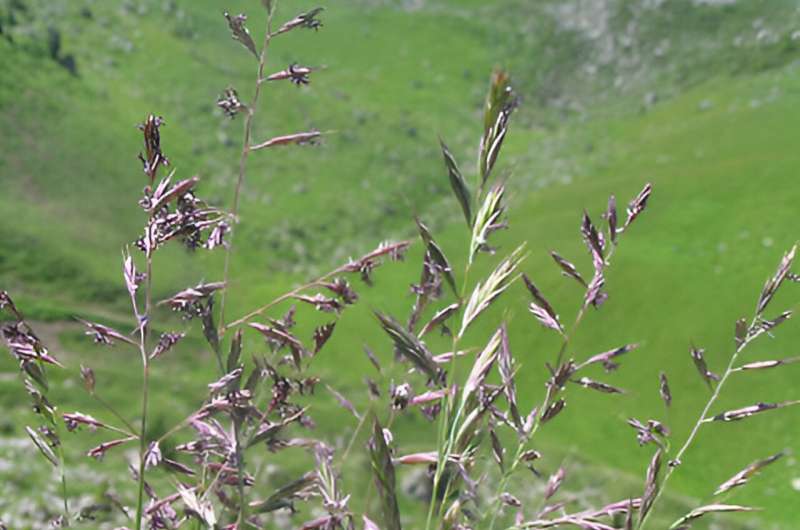This article has been reviewed according to Science X's editorial process and policies. Editors have highlighted the following attributes while ensuring the content's credibility:
fact-checked
trusted source
proofread
A review of the Epichloë festucae antifungal protein Efe-AfpA

A research team has reviewed the mechanisms behind endophyte-mediated disease resistance in strong creeping red fescue (Festuca rubra subsp. rubra) and identified the antifungal protein Efe-AfpA produced by Epichloë festucae as a key factor against dollar spot disease caused by Clarireedia jacksonii.
This review highlights the potential of Efe-AfpA and similar antifungal proteins from other fungal species as novel biocontrol agents, which could reduce the reliance on chemical fungicides and lessen their environmental impact.
Microbes and plants form close associations, which can be mutualistic or antagonistic depending on the pairing. Grasses in the Poaceae family often form relationships with Clavicipitaceous fungi, particularly Epichloë species, which reduce herbivory through the alkaloids production and exhibit antifungal activity in vitro.
A unique benefit of the E. festucae—Festuca rubra subsp. rubra symbiosis is its resistance to dollar spot disease caused by Clarireedia jacksonii and red thread disease caused by Laetisaria fuciformis. Current chemical controls for dollar spot lead to resistant strains, necessitating novel methods.
The study, published in Grass Research on 28 February 2024, explores the identification and potential of the antifungal protein Efe-AfpA and other similar proteins as new fungal disease controls, focusing on their fungal disease resistance mechanisms and applications.
In this study, researchers reviewed the well-documented symbiotic relationships between fungi and plants, particularly focusing on Epichloë endophytes and their benefits. These fungi, part of the Clavicipitaceous family, interact with cool season grasses, providing protection against herbivores through the alkaloids production and demonstrating antifungal activity.
Despite many reports of antifungal effects, the exact compounds involved often remain unidentified, particularly in natural settings. This review highlights the endophyte-mediated disease resistance in Festuca rubra subsp. rubra against dollar spot and red thread diseases, attributed to the antifungal protein Efe-AfpA produced by Epichloë festucae.
However, the current challenge lies in understanding the precise mechanisms of Efe-AfpA's antifungal activity and its practical application in disease control. The researchers emphasize the need for further studies to fully elucidate Efe-AfpA's role and efficacy, including its large-scale production, stability, and field trials, which could potentially offer a novel method for managing plant diseases and reducing reliance on chemical fungicides.
According to the study's lead researcher, Patrick Fardella, "Once fully characterized, Efe-AfpA and other proteins like it could represent a new product for plant disease control, alleviating the use of chemical fungicides and resulting in fewer environmental impacts and a reduction in the selection for resistant fungal pathogens."
In summary, Epichloë fungal endophytes enhance turfgrass physiological traits and provide disease resistance. The antifungal protein Efe-AfpA, produced by Epichloë festucae, protects strong creeping red fescue from dollar spot disease caused by Clarireedia jacksonii.
Further research is needed to scale up production, assess UV stability, and conduct field trials. Understanding Efe-AfpA's mode of action could lead to new biocontrol methods, reducing reliance on chemical fungicides and mitigating environmental impacts.
More information: Patrick Fardella, Harnessing antifungal proteins from fungi to protect plants: a review of the Epichloë festucae antifungal protein Efe-AfpA, Grass Research (2024). DOI: 10.48130/grares-0024-0001
Provided by Chinese Academy of Sciences




















